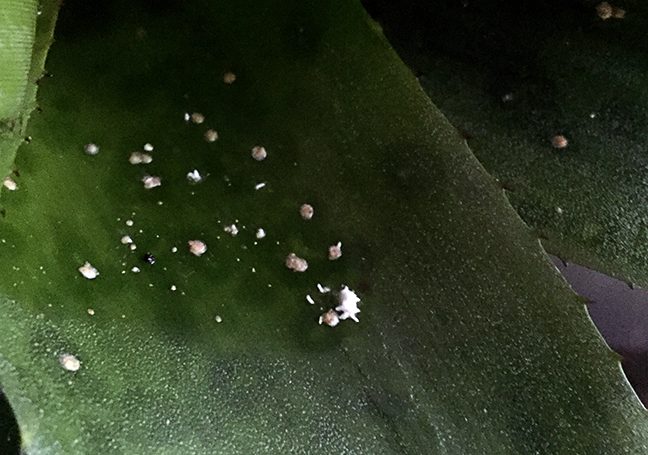Houseplant Problems
Houseplant Problems
Are your houseplants surviving but not thriving? This is the time of year when you might be seeing problems on your houseplants. Why would you notice insects, leaf drop and other problems in mid-winter? It’s common for these things to come to a head now because indoor conditions are stressful for plants at this time of year. The days have been short for several months now, so the plants have had less light. The air in our centrally-heated homes is dry and since windows are seldom opened there is little air circulation. And finally, since there are no natural predators in the house the insect populations aren’t kept in check as they would be outdoors.
Here are some tips for keeping your houseplants happy as we move through the rest of the winter and into the spring.
- Misting and trays of rocks do little to increase indoor humidity, but placing a group of plants together in a room can help. So one way to increase the amount of moisture in the air is to have more plants! Humidifiers can help people as well as plants, of course, and you might find that a small unit might improve how your skin feels as well as how the plants grow.
- Keep plants clean. If your houseplants are light enough to easily move, place them in the shower and run room-temperature water over the leaves for a few minutes. If the plants are too heavy to easily put in the shower, wipe the leaves with a damp cloth. This not only removes dust but can keep pests such as spider mites under control. It will also give you a closeup view of each plant’s leaves, so that you’re more likely to spot signs of scale, mites and mealybug before they get out of hand.
- If you do see insects or feel sticky leaves, wipe the plant well and spray with horticultural oil or insecticidal soap. Separate infested plants from the others in your home.
- Remove dead or yellowing leaves. Keeping plants clean will improve their looks tremendously.Plants frequently drop leaves at this time because the days have been so short for so long that there isn’t enough work to keep all that foliage “employed.”
- If a plant has grown lanky and tall, or weak and spindly, many can be trimmed or pinched back to stimulate bushy growth. If you’re uncertain if this is appropriate for your plant, take a photo and bring it into the garden center so that we can more accurately advise you.
- This is the time of year when it’s good to begin fertilizing indoor plants that were given a “rest period” through January. An application of earth worm castings on top of the soil can help as well.
- If a plant has been in the same pot for more than two years it might need repotting. Come in and talk to our Greenhouse Green Team if you’re hesitant to do the repotting yourself.
3 Comments
Leave a Comment
Subscribe To Our Newsletter
Sign up for our weekly email about sales and events.


Hi:
Great post. The question I struggle with is how do you know when to repot the plants an what size pot should they be replanted in?
Are you able to respond on that question?
Thanks.
Chris G
Great question, Chris. In general, most houseplants need repotting when the roots appear going out the bottom hole or if they’ve been in the same pot for 3 years or more. Some plants grow more quickly and need a new pot more often, however. If the plant isn’t too large, you can tip it out of the pot and look for circling roots around the outside of the dirt ball. If you see a mass of white roots going around and around on the sides or bottom, that plant needs a new pot.
In general, select a pot that is about 2 inches larger on all sides including in height. Once you go over five inches, larger on all sides that’s probably too large, however. At some point it’s impossible to keep going larger and larger, and when this happens you can take a plant out of the pot, prune off an inch or two of the roots on the bottom and loosen the roots on the side, pulling off some of the old potting soil. Then repot in the same pot using fresh potting mix. When repotting a plant it can help to add a tablespoon or so of organic, granular fertilizer to the potting soil. I like to use Plant-tone for this. I hope this helps!
Hi Nan,
I seldom send replies to any newsletter…but I so look forward to the Country Garden one that you write! I thought I should let you know. Thank you for the personal touch and all the great tips and sale info. I have begun to bring my off Cape visitors to the store, and they always leave with something and sign up for your e-mails. You have that special touch.
Fondly,
Linda LaCroix